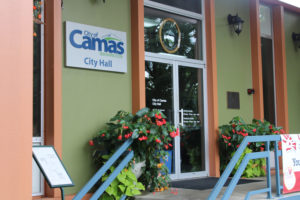Preliminary land-use concepts for Camas’ North Shore show a mix of residential, commercial, mixed-use and business park-light industrial zones abutting a thick band of city-owned green space along the northern shores of Lacamas Lake.
Camas Planning Manager Robert Maul and WSP USA consultant Nicole McDermott presented the draft concepts to the city’s Parks and Recreation Commission on Jan. 26.
Camas annexed the roughly 800-acre area known as North Shore into the city limits in 2010, with plans to use the mostly agricultural area for a mix of residential, commercial and industrial uses.
“North Shore is in the city limits and has comprehensive plan designation and zoning,” Maul explained during the Parks and Recreation Commission’s Jan. 26 meeting. “It could move forward with development today if somebody wanted to do that.”
Instead, city officials and many community members hope the North Shore will develop into a unique, forward-thinking area of Camas known for its abundance of green spaces and recreational opportunities; natural beauty and environmental protection; walkability; mix of housing options; small, locally owned businesses; and light industrial business parks located further away from the lake, on the northern end of the North Shore.






